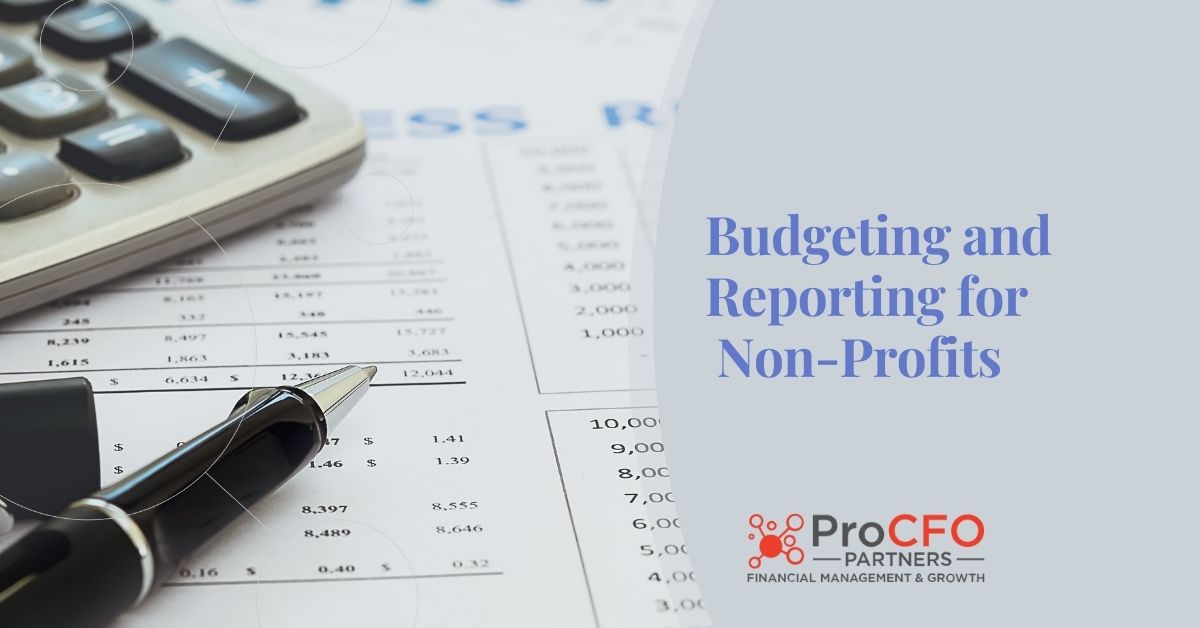Budgeting and Reporting for Non-Profits
May 19, 2022
Non-Profits have many unique characteristics in generating revenue, cultivating “customers” (or donors), and providing services. But they have a lot in common with for-profit businesses, too, including the need for accurate budgeting and reporting. This article will explore some of these unique characteristics and discuss what non-profits should do first, better, or differently to optimize for success.
Audits and The Audience
Financial audits are a crucial function of non-profit organizations because of two key audiences: State or federal oversight, such as required by the IRS in a Form 990-N annual notice, and donors or foundations making donations. The financial audit process includes external and internal reviews of the organization’s financial records, including but not limited to: the balance sheet, income statement, cash flow statement, change in equity, and notes to the financial statements. So, on the one hand, there is a legal stipulation involved with the necessity for an audit, and on another are compliance and operational aspects for foundations.
Yet there’s a third audience: The organizational stakeholders involved in budgeting, forecasting, and planning. While the rigor of an official audit may not be necessary for an organization’s leadership, the insight delivered has to mesh across all entities.
To this end, financial leaders must be capable of knowing who needs what, when, in how much detail, and to what end.
The outside world (including the IRS)
Federally exempt organizations have to demonstrate that they’re spending (and making) resources in appropriate ways that are consistent with their mission and programs. Form 990 is required to be filed and is public, and must answer appropriately to questions or scrutiny.
In response, the reporting required should be by-the-book and transparent.
Supporters (like donors, foundations and others that fund a non-profit)
These entities may also review a 990, but they might be interested in more specific details on particular programs or areas of interest. Additionally, they might not be savvy in financial or accounting jargon or terminology.
Reporting should be presented in ways that answer key questions or areas of interest and delivered in context. Think about it: Supporters aren’t (just) looking for what’s on the ledger. They’re curious about what it means. Is a particular program going well or growing? Is it underfunded or in need of attention? Why? Reporting itself won’t necessarily answer these concerns, but a mindful reporter will.
Management and other organizational leaders
Accuracy is vital for this audience, as they’re trying to understand present realities and forecast for the future. Reserve planning, for instance, is usually top of mind. So this audience might be looking for a mix of detailed analysis and common-sense determination (and communication) of the value of insights. Okay, it’s great to have this information. Now what?
It takes a unique skill set to be able to accommodate all three audiences. It’s not only the technical skills required for accurate financial functions but communication and relationship-building skills to connect to the people and personalities involved.
Three Horizons
Financial leaders manage “three horizons” in almost any organization – next month, the fiscal year, and a three-year (or longer) strategy. Doing this requires attention to how what’s happening in the short term will have implications later on or how goals farther away should inform short-term planning. For a non-profit, an added layer of the mission is top of mind. Community impact, sustainability, legal or legislative realities, and the dynamic nature of donors all play a role. Many factors inform the balance sheet, including public perception and the ways forward.
Strategic Guidance
An experienced and capable financial officer has unique responsibilities for helping non-profit organizations make informed decisions. In many organizations, 80% of their funds are given by 20% of their donors. How can that base be grown larger? What happens if that 20% thins to 17% or 15%? How will the non-profit manage if the unexpected happens or during a recession?
Non-profits must align themselves with partners who can shed light on these and other strategic issues like holding reserves, making new hires, or beginning new initiatives.
A fractional solution (such as ProCFO Partners) is a smart business decision for many organizations. The non-profit gets seasoned, expert guidance and reporting capabilities but doesn’t have to manage the overhead of a full-time or even part-time employee.
Mission Minded
Finally, while budgeting, reporting, forecasting and financial management are important, they must happen in the context of and in alignment with an organization’s purpose and responsibilities. It’s not enough to know the books – like other leaders in a non-profit organization, it’s care and concern for the mission that makes financial vision and strategy create impact and change.
Budgeting and Reporting for non-profits can be involved and sometimes tricky, considering the different audiences and responsibilities involved. It takes the “perfect partner” to fulfill what’s required in many ways. If your organization is struggling to make sense of the numbers, what they mean and what should come first or next, reach out. Together we can help you create your next.


